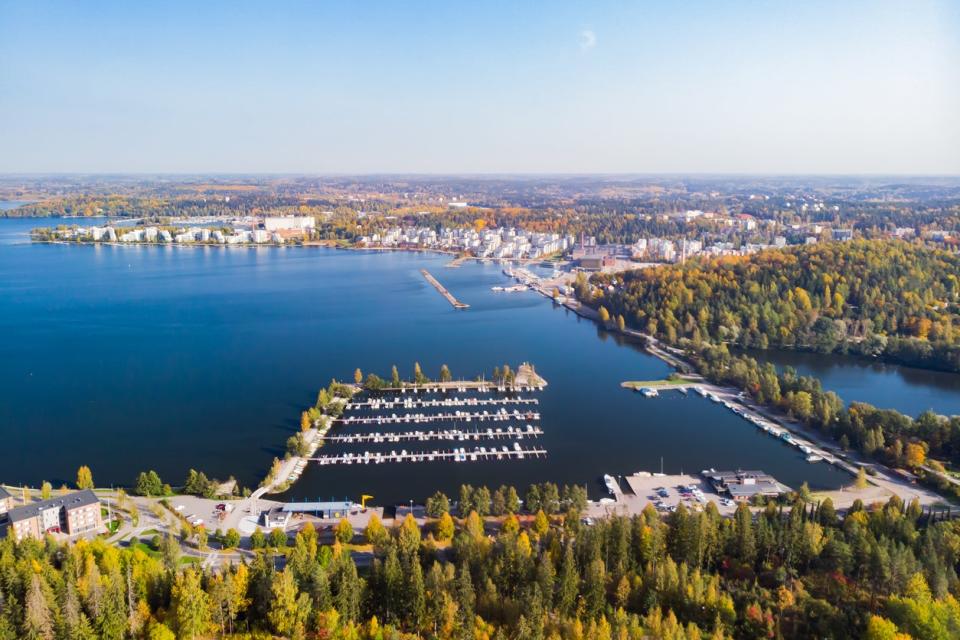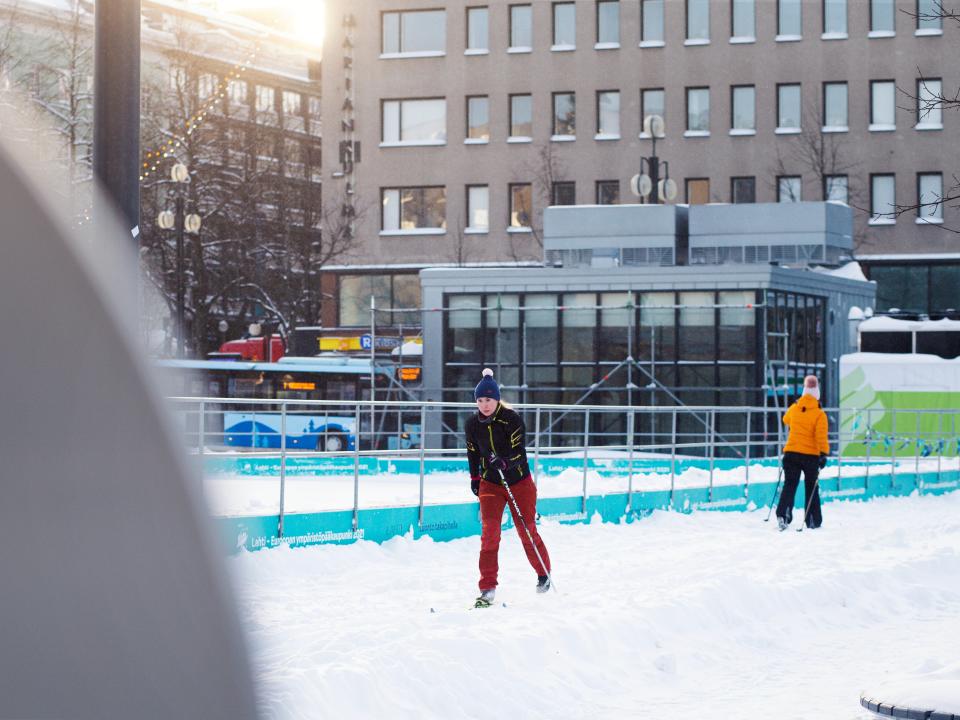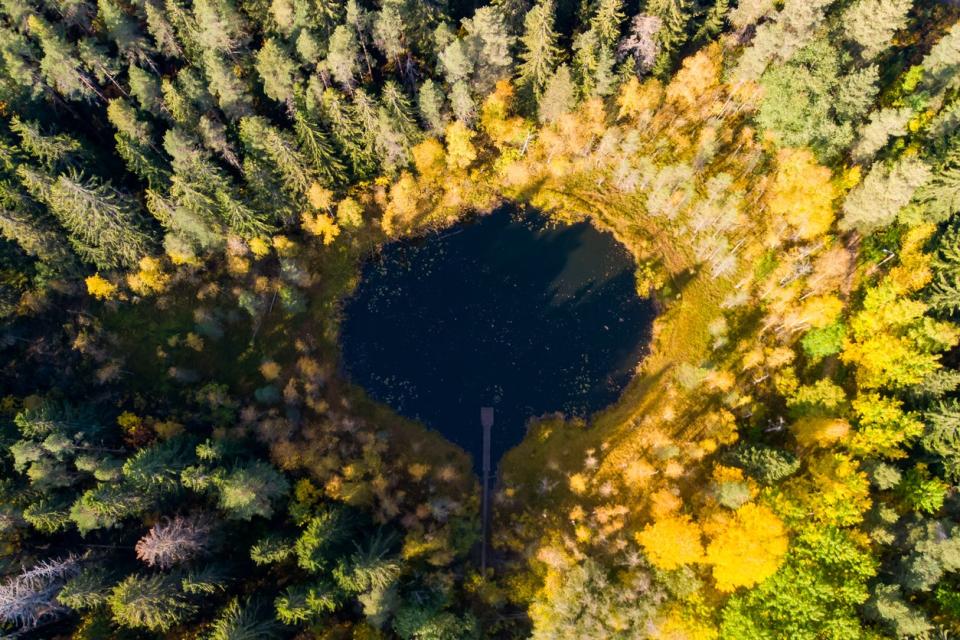How Lahti earned its place as the Green Capital of Europe

In addition to being the happiest nation in the world, inventing the sauna and having a penchant for heavy metal music, Finns are known for their all-round no-nonsense pragmatism. Lahti, an hour’s drive north from the capital Helsinki in southern Finland, confirms this reputation by virtue of its name, simply meaning “Bay”. It’s in reference to its location, snuggling on the shore of one of Finland’s many enormous lakes, which is called – with similar descriptive economy – Vesijarvi, or “Water Lake”.
In spite of its scenic location, Lahti might not be on the must-visit list for many leisure visitors to Finland, where the prime draws tend to be Helsinki, the Lakeland bordering Russia to the east, and Lapland, with its Northern Lights and Christmas themes. But Lahti, population 120,000 and capital of the Paijat-Hame province, is asserting itself as a travel destination, not least on the basis of its status as 2021 Green Capital of Europe.
Lahti is the 12th city to be awarded this honour, joining a list that includes the likes of Bristol, Hamburg, Lisbon and Copenhagen. Cities with a minimum population of 100,000 can apply for the award, overseen by the European Commission in recognition of a variety of environmental factors, from transport and biodiversity to eco-innovation and air quality.
The idea is not just to provide an annual showcase, casting a temporary spotlight on individual communities, but to acknowledge a record of environmental achievements, to recognise ambitions for sustainable development, and to promote European urban role models for best environmental practices. And having green credentials could just be the thing that gives cities the edge when it comes to future tourism.
“In the future, our selling points will be our natural environment and health benefits of being close to nature,” says Milla Bruneau, director of the Green Lahti programme. “Being able to swim in a clean lake, to eat fresh fish caught in local waters and to eat and drink other local products – these are the things that people will want to visit Lahti for. For younger people it’s going to be an even more important issue. If you’re not on top in terms of sustainability, people will go somewhere else.”

None of these elements are exclusive to Lahti, in a country where lakes and forests are abundant and bound to be even more attractive to post-Covid tourists looking for safe room to roam. Lahti, however, can justifiably claim to be ahead of the sustainability game. The city has pledged to cross the carbon neutrality finish line by 2025, 10 years before the national target. Up to 99 per cent of household waste is recycled, with advanced waste separation practices well established in households and businesses. The hospitality sector is also onboard, as exemplified by the Green Key-labelled Sokos Hotel Lahden Seurahuone, whose rooms have hosted presidents and royalty.
Meanwhile, Finland’s purest water flows through the natural sand and gravel filters that form the city backdrop of the Salpausselka ridge, an Ice Age relic, feeding Lake Vesijarvi. This water also feeds the Hartwall brewery, one of Finland’s biggest, and the award-winning whisky and ales of the Teerenpeli distillery and craft brewery.
If you’re not on top in terms of sustainability, people will go somewhere else
Clean water is one of the central themes, as well as an intended legacy of the Green Capital programme, along with carbon neutrality, a waste-free circular economy and a green urban environment. Vesijarvi’s plentiful fish, with succulent white pike-perch (zander) a speciality, are prominent at Lahti’s many restaurants, the “slow-food” menus of which also feature game, berries and mushrooms, as well as breads baked from local oats and rye. Recommended restaurants include Restaurant Roux in a converted 19th-century pharmacy, specialising in Finnish and Nordic cuisine, and the Taivaanranta Grill and Distillery, also with a Finnish-themed menu.

Proximity to nature is a constant reference point in the Green Capital project, but also in everyday Lahti life. The pine forests and steep slopes of Salpausselka ridge lend themselves to summer hikes and winter sports, and towering ski jumps are among Lahti’s landmarks. City attractions include a sports museum, celebrating the heritage of annual cross country ski and ski jump events. A novel urban ski-sharing scheme, the first in the world, is the winter equivalent to the bike share available in snow-free months, and an imaginative step towards encouraging carbon neutral transport.
Elsewhere, those forests are the inspiration for much Finnish art, design and culture, all three of which converge in the Sibelius Hall – an elegant symphony in timber named after the nation’s most loved and famous composer – that graces the waterfront. Events planned here and in other venues for the Green Capital scheme are now scheduled for the second half of the year, when it’s hoped that travel restrictions to Finland will be relaxed.
The optimism of Bruneau, a local “Lahtelainen” herself, is undiminished by Covid-enforced challenges, and she enthuses about how the city’s existing attractions already form the foundation for the Green City initiative. “We are in a transition to a more sustainable future,” she says. “I can see this programme generating an interest in other cities, in travel and in business, and I believe this year will be an exhilarating time for us.”
Read More

 Yahoo Finance
Yahoo Finance 